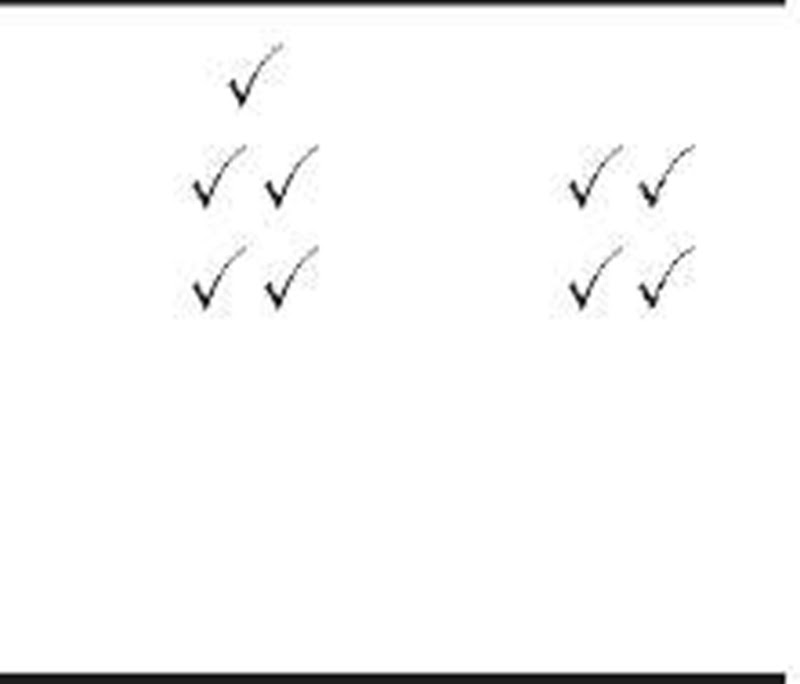1. Hybrid MS instruments
Tandem mass spectrometry, or MS/MS, has become the preferred technology for many applications in which mass spectrometry plays a part. First, tandem mass spectrometry allows selection and isolation of specific compounds of interest and their subsequent identification. Second, the extra selectivity of MS/MS enables this technology to be used for quantification of target compounds, even in the presence of complex matrices.
There are several different types of mass analyzers that are commercially available. These different mass analyzers have different characteristics that make them more or less suitable for certain applications. Hybrid MS instruments consist of two mass analyzers in series and a means for fragmenting selected ions, usually positioned after the first mass analyzer and before the second. The means for fragmenting ions is most commonly that of promoting collision-induced decomposition (CID) in which ions undergo collisions with gas molecules in a partially enclosed collision cell. In most hybrid MS instrumentation, the processes of mass selection, fragmentation, and product ion mass analysis take place sequentially in space. The first mass analyzer (MS1) may be used to select ions of a target compound, the CID gas collision cell to fragment those ions, and the second mass analyzer (MS2) to analyze the products of the fragmentation process. In some instances, fragmentation can take place in one or other of the mass analyzers. Here one or more of the processes of mass selection, fragmentation, and product ion mass analysis can take place sequentially in time.
Different combinations of mass analyzers also have different characteristics that make them more or less suited for certain applications. It is possible to combine most types of mass analyzers in almost any sequence, and numerous combinations have been constructed. Table 1 lists the available types of mass analyzers and those combinations that are most commonly used for MS/MS applications.
The following is a brief description of those hybrid instruments that are most commonly used for studies in the life sciences, and their principal areas of application.
Table 1
| MS1 | MS2 | ||||
| Magnetic sector | Quadrupole filter | Quadrupole trap | Axial TOF | Orthogonal FT-MS TOF | |
| Magnetic sector Quadrupole filter Quadrupole trap Axial TOF Orthogonal TOF FT-MS |  |
 |
 |
 |
 |
^ Hybrid combinations that are or have been available, but are not commonly used in the life sciences.
^ Hybrid combinations that are available and are most commonly used for studies in the life sciences.
2. Triple quadrupole (Q-CID-Q)
In the triple quadrupole tandem mass spectrometer, MS1 is a quadrupole mass filter (see Article 8, Quadrupole mass analyzers: theoretical and practical considerations, Volume 5) followed by a gas collision cell and then by MS2, which is again a quadrupole mass filter. The name “triple quadrupole” is derived from the first such instrument in which an RF quadrupole was used to guide ions through the gas collision cell. The quadrupole mass filter is typically used to transmit ions of a single m/z value. Therefore, to record a full mass spectrum, the quadrupole must be scanned across the full m/z range to sequentially transmit ions of different m/z values. The duty cycle for this process is quite low, and as a consequence, the sensitivity of a quadrupole mass filter used to record a full spectrum is relatively poor. On the other hand, the quadrupole mass filter will have 100% duty cycle when used to transmit ions of a single m/z value. The triple quadrupole used for selected reaction monitoring (SRM), in which it is used to transmit ions of a single precursor in MS1 and ions of a single product in MS2, is very specific and exceptionally sensitive. Therefore, triple quadrupoles have found significant use in the drug development process where they are used in the SRM or MRM (multiple reaction monitoring) modes to quantify target compounds of biological significance.
A common application in peptide and protein analysis for the triple quadrupole makes use of the “precursor ion scanning” mode. In this mode, MS2 is set to transmit a specific characteristic product ion, while MS1 is scanned to sequentially transmit precursor ions into the gas cell for fragmentation. When the specific product ion is detected, then the precursor ion mass transmitted by the quadrupole is recorded. This approach has proved particularly useful in the analysis of protein post-translational modifications, such as phosphorylation and glycosylation.
3. Quadrupole-quadrupole trap (Q-CID-Q/Trap)
A derivation from the triple quadrupole tandem mass spectrometer is the arrangement in which the MS2 quadrupole mass filter is substituted with a linear quadrupole ion trap (see Article 9, Quadrupole ion traps and a new era of evolution, Volume 5). In addition to the normal attributes of the triple quadrupole, the MS2 linear quadrupole ion trap provides some greater flexibility for qualitative applications. This arrangement allows trapping of precursor or fragment ions in the MS2 linear quadrupole ion trap with subsequent mass selective axial ejection, thus improving full scan MS or MS/MS sensitivity over the triple quadrupole mass spectrometer. The linear quadrupole ion trap can also be used to enhance the relative abundance of certain fragment ions and the abundance of multiply charged ions relative to that of singly charged ions.
4. Quadrupole trap-axial time-of-flight (Trap/CID-TOF)
In this tandem MS/MS arrangement, MS1 is a conventional 3D quadrupole ion trap and MS2 is an axial time-of-flight (TOF) mass spectrometer. The quadrupole ion trap is also used as the collision cell for fragmentation of precursor ions selected by the ion trap. The TOF mass spectrometer incorporates a reflectron to improve mass resolution and mass accuracy. This combination has been primarily coupled with MALDI (see Article 11, Nano-MALDI and Nano-ESI MS, Volume 5). The insertion of the quadrupole ion trap between the MALDI source and TOF mass spectrometer decouples these elements so that mass resolution and mass calibration is no longer dependent on variations in the MALDI source conditions. This arrangement allows MS” experiments to be carried out in the quadrupole ion trap, with the fragments ejected and mass measured using the axial TOF. This provides MS” capabilities on an instrument that can obtain mass measurement accuracy of better than 10ppm. The MS” and accurate mass capabilities of this instrumentation allow its use for peptide and protein identification.
5. Time-of-flight-time-of-flight (TOF-CID-TOF)
In this instrument, a MALDI ion source is coupled with an axial time-of flight mass analyzer (MS1), and can be used to select precursor ions for fragmentation in a gas cell. Fragmentation may also occur by post source decay (PSD). Mass analysis of the fragment ions produced is then accomplished by further acceleration of product ions into a second axial time-of-flight mass analyzer (MS2). The MS2 mass analyzer incorporates a reflectron (see Article 7, Time-of-flight mass spectrom-etry, Volume 5). This and the use of appropriately timed acceleration fields in one or both TOF mass analyzers provide improved resolution and mass measurement accuracy on the fragment ions than may be obtained in a traditional PSD experiment on a conventional TOF instrument. These instruments are targeted at “high-throughput” protein identification studies.
6. Quadrupole-orthogonal time-of-flight (Q-CID-TOF)
This hybrid MS/MS instrument includes a quadrupole mass filter (MS1), followed by a gas collision cell for fragmentation of selected ions, and finally, an orthogonal acceleration time-of-flight (TOF) mass spectrometer (MS2) for recording mass spectra. The orthogonal TOF mass spectrometer (see Article 7, Time-of-flight mass spectrometry, Volume 5) has a number of advantages over a scanning quadrupole mass filter. The orthogonal TOF will repetitively extract a portion of a continuous ion beam and will record the full mass spectrum. The speed of acquisition, sensitivity, mass resolution (>15 000 FWHM), and mass accuracy (<5ppm RMS) are all considerably higher than for a scanning quadrupole mass filter. As a consequence, it is normal practice to use the TOF mass spectrometer for acquisition of both precursor ion and product ion mass spectra. Precursor ion spectra are acquired by operating the quadrupole in the RF (nonresolving) mode so that the total ion flux is transported to the orthogonal TOF for mass analysis. Switching to MS/MS only requires switching the quadrupole into the resolving mode at the required precursor ion mass and raising the collision energy appropriate to that for the selected mass and charge of the precursor ion. This hybrid combination does not offer the sensitivity to match that of a triple quadrupole in the SRM or MRM modes of operation. On the other hand, it provides excellent sensitivity, speed, and selectivity that make it particularly well suited for qualitative applications. It is most commonly used for the identification of unknowns from the exact mass measurement of the precursor ion and its product ions. This hybrid configuration is one of the preferred arrangements not only for the identification of peptides and proteins but also for the identification of metabolites and other small molecules of biological significance.
7. Quadrupole trap-orthogonal time-of-flight (Q-CID/trap-TOF)
This hybrid MS/MS configuration is similar to the previously described quadrupole-orthogonal TOF combination other than the linear quadrupole in the gas collision cell is additionally used to trap ions. In addition to the attributes of the quadrupole-orthogonal TOF combination, this arrangement has the capability to increase the duty cycle of the orthogonal TOF over a narrow mass range, albeit at the cost of reduced duty cycle outside that mass range. This is achieved by temporarily trapping ions in the quadrupole gas cell, releasing them, and pulsing the orthogonal TOF accelerating field such as to synchronize with the arrival of ions of interest. This increases the duty cycle, and hence sensitivity, for those ions. This can be advantageous for certain applications in which, for example, a specific daughter ion species is of interest. As with the “precursor ion scanning technique” on a triple quadrupole, this approach can be useful in the analysis of protein post-translational modifications, such as phosphorylation and glycosylation.
8. Quadrupole-Fourier transform ICR-MS (Q-CID-FTMS)
This hybrid MS/MS instrument consists of a quadrupole mass filter as MS1, followed by a gas collision cell for fragmentation of selected ions, and finally, a Fourier Transform Ion Cyclotron Resonance (FT-ICR) or Fourier Transform Mass Spectrometer (FTMS) as MS2 for recording of mass spectra (see Article 5, FT-ICR, Volume 5). This has similar characteristics to that of the quadrupole-orthogonal TOF combination, other than that the TOF is replaced with an FTMS. Modern FTMS systems, employing superconducting magnets with field strengths in the region of 7 to 12 Tesla, are capable of very high resolution (>100 000 FWHM) and mass accuracy (<2 ppm RMS). As with the quadrupole-orthogonal TOF combination, the FTMS can be used for recording both precursor ion and product ion mass spectra.
9. Quadrupole trap-Fourier transform ICR-MS (Trap/CID-FTMS)
This hybrid MS/MS combination incorporates a linear quadrupole ion trap (MS1), which also functions as a gas collision cell for fragmentation of selected ions, and an FTMS (MS2) for recording of mass spectra. This configuration has very similar characteristics and advantages to that of the quadrupole mass filter-FTMS combination. However, the linear quadrupole ion trap also allows mass selective radial ejection to separate ion detectors. This offers a number of additional advantages.
First, the linear quadrupole ion trap may be used for recording product ion spectra with higher sensitivity, albeit at reduced mass resolution and mass accuracy.
Second, the inherent dynamic range of the FT-ICR trap is quite limited; it requires an optimum number of ions for optimum mass accuracy. The linear quadrupole ion trap can be used to accumulate approximately the required number of ions before transferring them to the FT-ICR cell. This technique effectively extends the dynamic range for this type of hybrid MS/MS mass spectrometer.
Third, the measurement time required by the FTMS can be quite long if the highest mass resolution is required. The linear quadrupole ion trap may be used to acquire product ion spectra while simultaneously acquiring the highest mass resolution precursor ion spectrum with the FTMS.
As for the conventional 3D quadrupole ion trap, daughter ions with m/z values less than about 25 ~ 33 % of the precursor ion m/z value are unstable in the linear quadrupole ion trap, and are not recorded. However, the linear quadrupole ion trap can be programmed to acquire MS” spectra.
